
Tour 1: Selecting material by designation
Finding properties of unknown material with known and/or partially known designation is very common engineering activity.
Although sometimes fairly trivial, this task can often be extremely tedious and time-consuming, especially when materials originate from different countries and standards are involved.
Step 1: Choosing a search option
Suppose that you want to identify material with the designation Ck 45. Origin of the material is unknown.
Your first step is to choose a search option. Oxford Instruments Grade Database search engine performes searching material(s) by designation most efficiently through the Quick Search option.
Step 2: Defining search criteria
Enter material Ck 45 in the designation field. Spaces and cases are not relevant for searching (Ck45 and Ck 45 are the same), since the world standards of steel designations are not treating spaces in a uniform way.
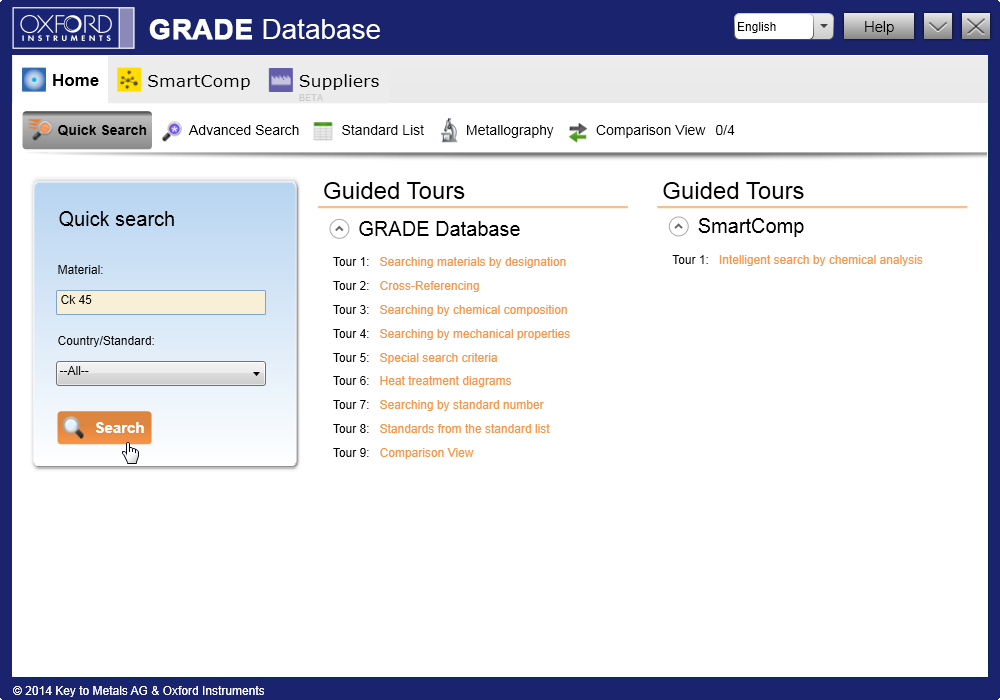
Since the origin of the material is unknown, leave All in country's pop-up list. Search engine will search whole database.
All you have to do then is to simply click button  In a few seconds Oxford Instruments Grade Database search engine will find all materials in the world, which have Ck 45 in their designation!
In a few seconds Oxford Instruments Grade Database search engine will find all materials in the world, which have Ck 45 in their designation!
Step 3: Selecting a material from the list of the results
Searching materials by designation generally results in a list of materials that satisfy criteria you gave. Depending on search criteria, this list can be quite large (up to 2000 materials), but in our example resulting list consists of 6 materials. By clicking on their designation, you can retrieve and review their properties.
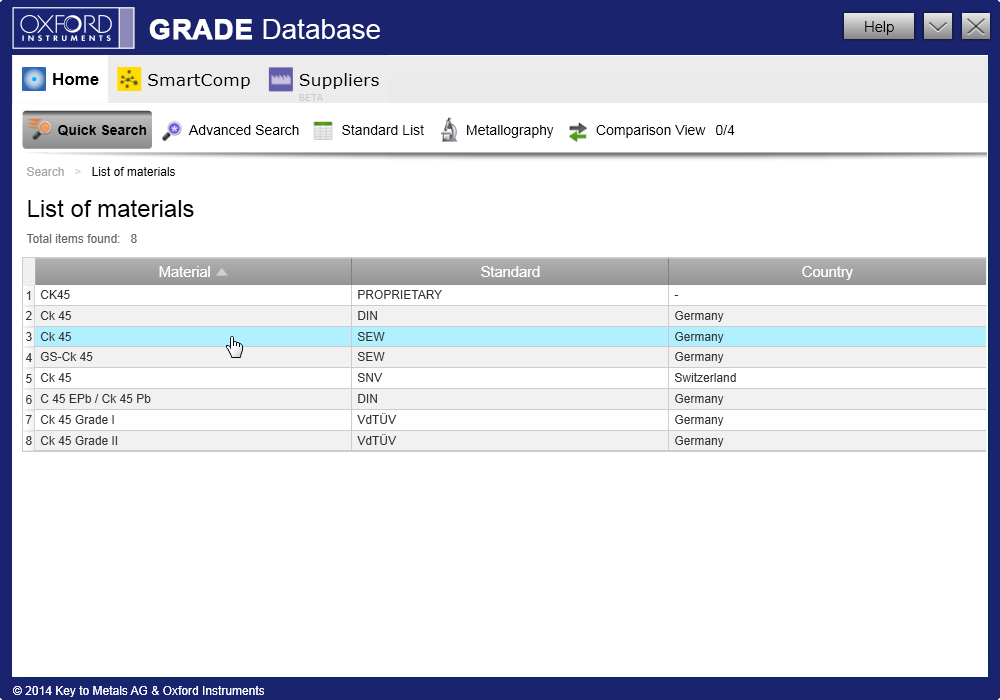
Suppose that you are mainly interested in German steel materials, defined by DIN. Therefore, select steel defined by DIN from the list.
Step 4: Selecting group/subgroup of the material
Sometimes materials with the same designation can be defined by various standards in the same country and/or belong to more than one group and subgroup. Although chemical composition usually does not vary significantly, group/subgroup where material belongs sometimes has significant consequences on mechanical properties of the material and its application.
Oxford Instruments Grade Database displays groups/subgroups to which material belongs. Very often there is only one, since many materials are defined in only one standard/group/subgroup, but there can also be more. You can review material properties by clicking on the links in the Details column.
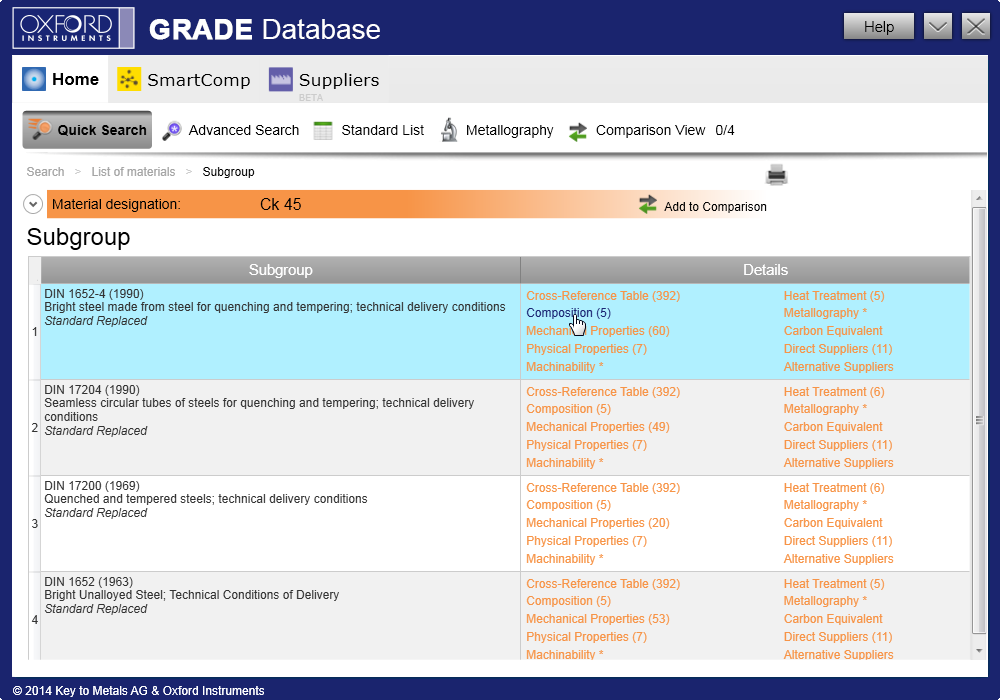
Now all the parameters are defined, you can view properties of the materials. Everything is completed in less than one minute!
Step 5: Viewing the properties of the material
Oxford Instruments Grade Database displays chemical composition, mechanical properties of the material, its application and cross-reference table of the materials (i.e. table of similar steel materials). You can view those properties and, if you want, print them out by using standard Print option of your Web browser.
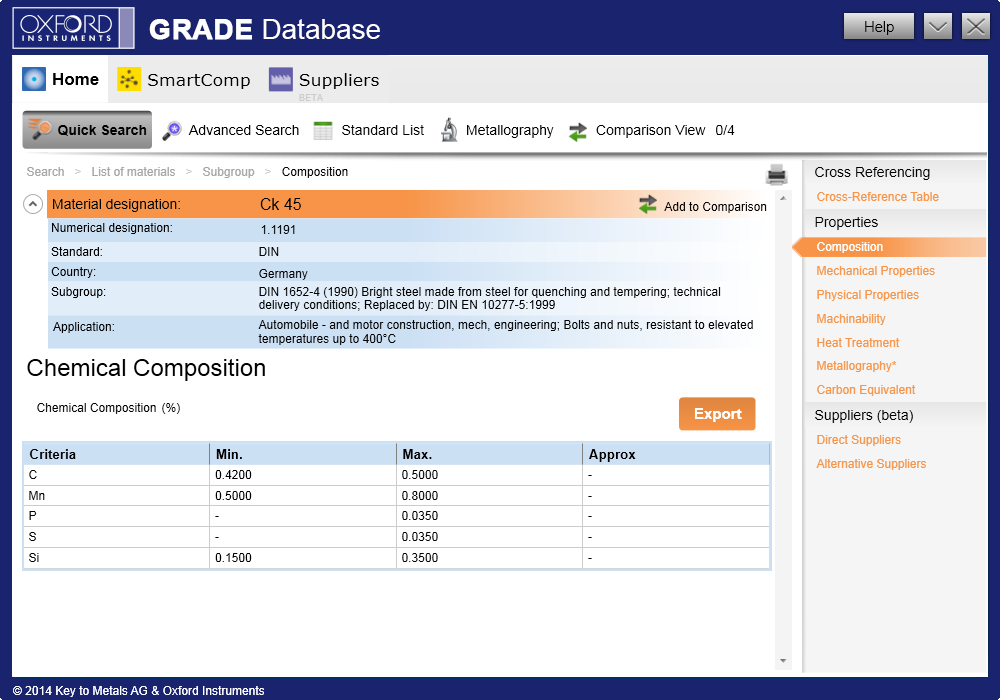
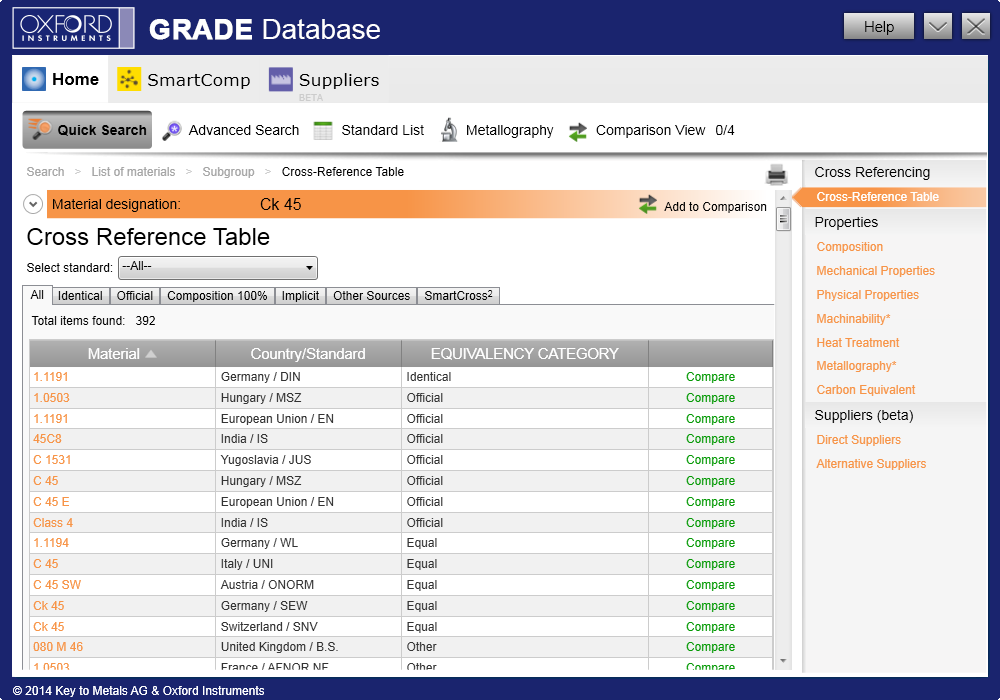
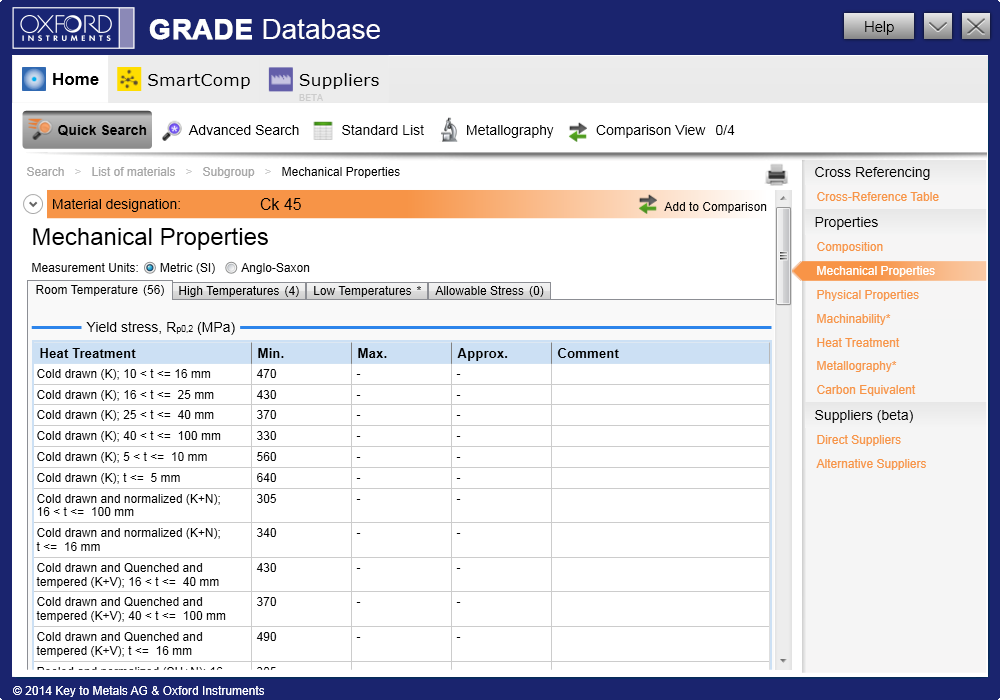
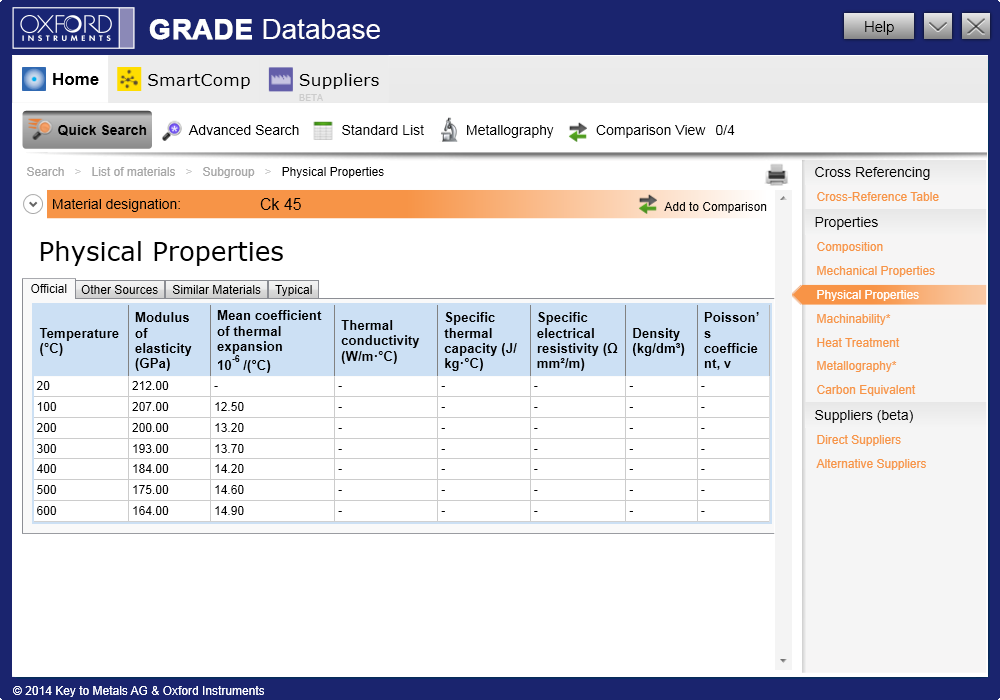
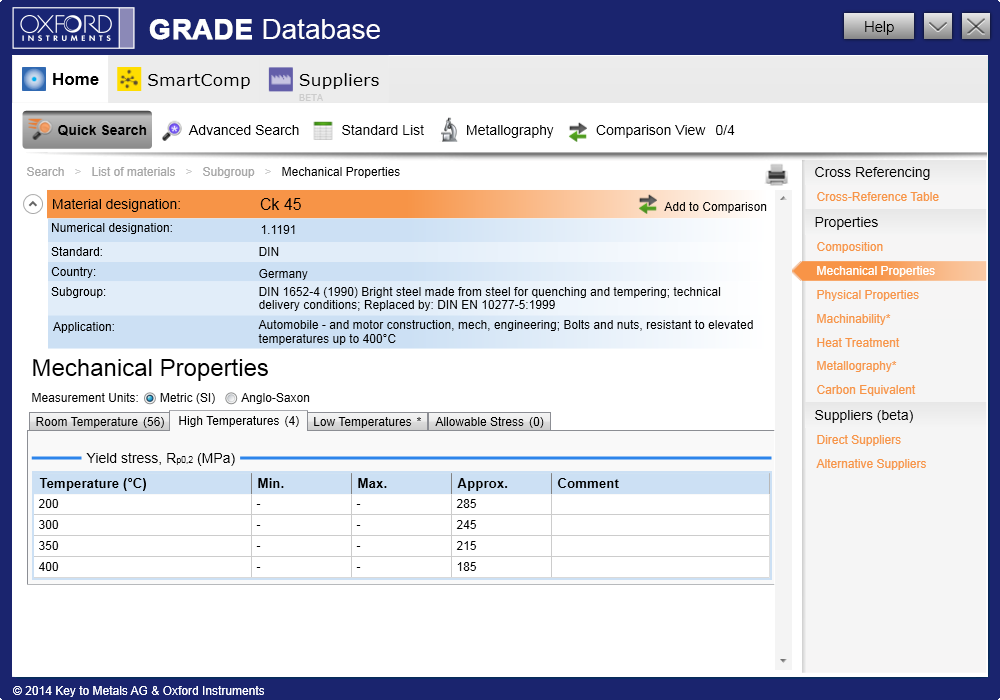
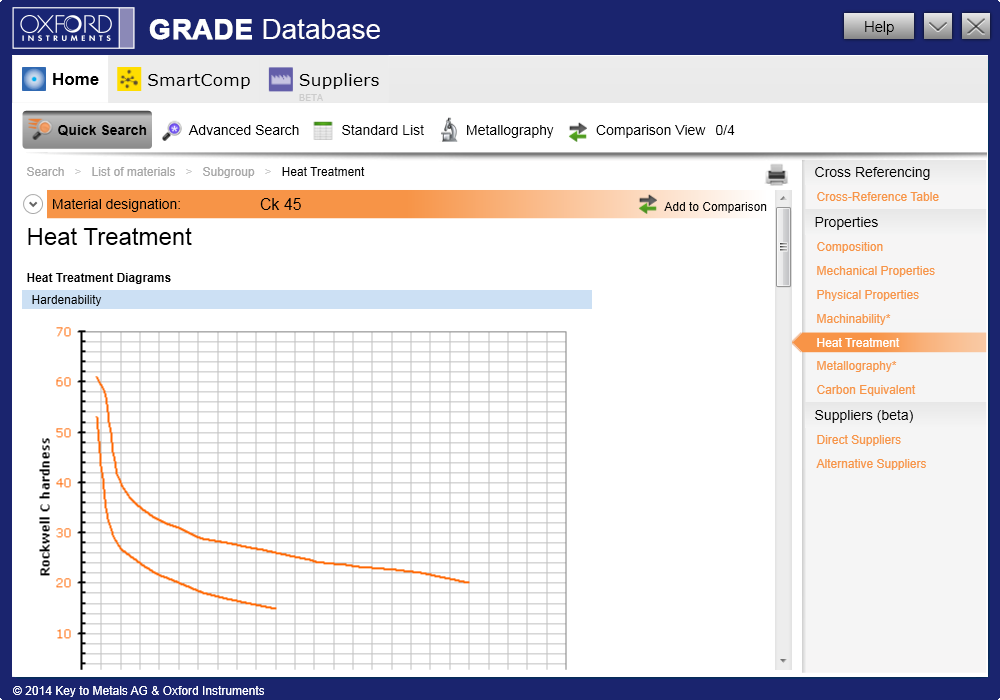
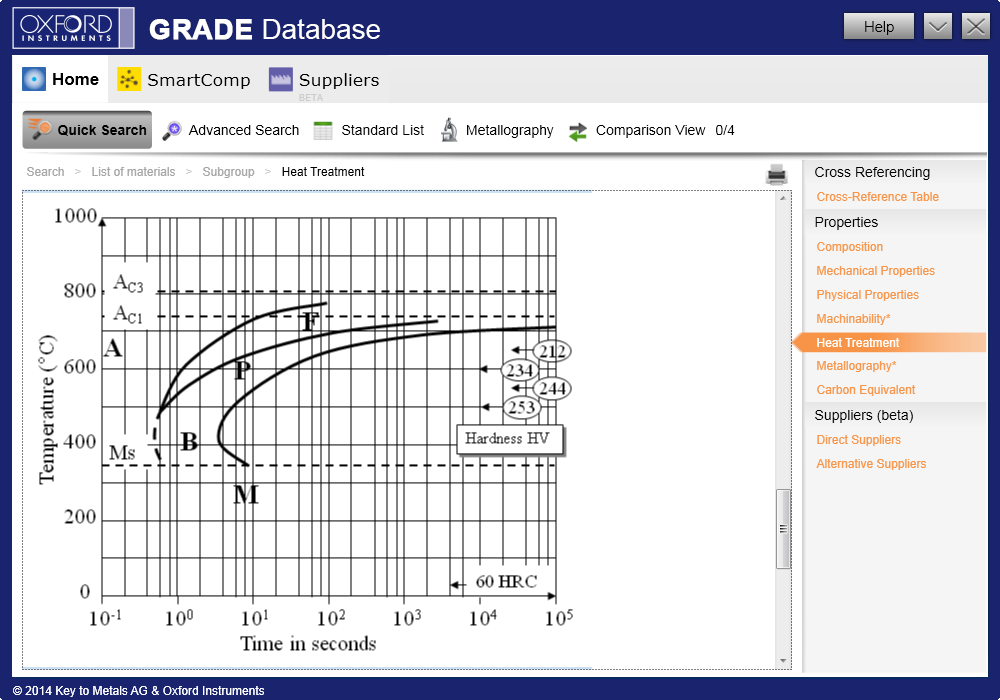
Step 6: Viewing similar materials by using SmartCross
To view additional similar materials, click on SmartCross tab. Basing on similarity of compositions, intelligent algorithms will find similar materials among thousands materials from the whole Database.
You may adjust similarity threshold from 0.5 to 1.0, thereby increasing and decreasing result list.
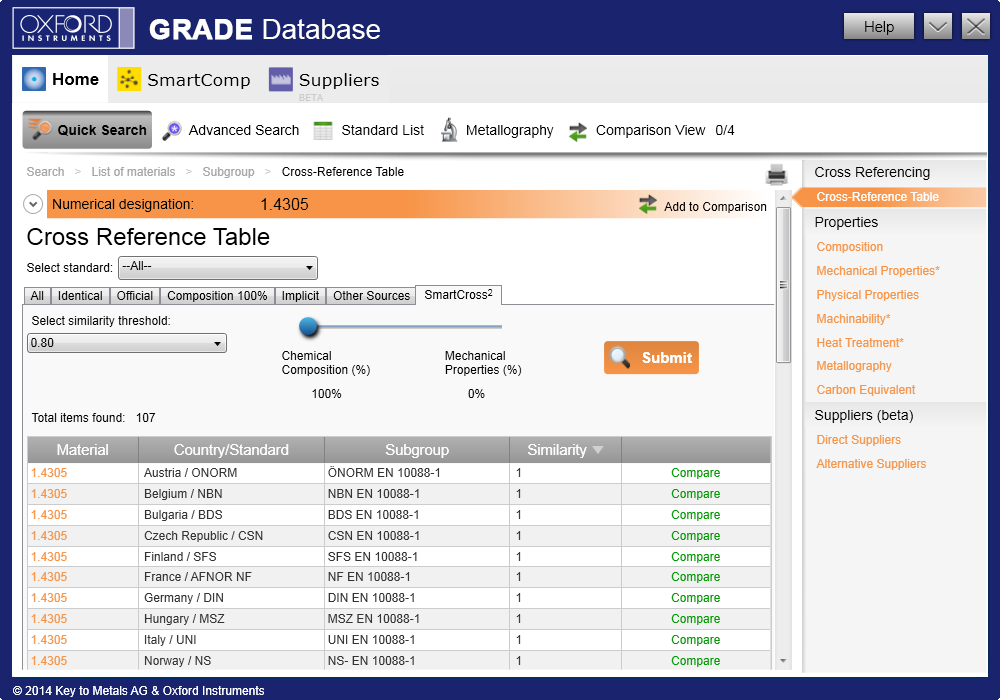
The end of the tour? Not necessarily. There is one interesting feature: materials enlisted in cross-reference table have their own hyperlinks.
So if you want to see properties of any of them (for example USA AISI materials), you just have to click on its designation. Oxford Instruments Grade Database will instantly bring you there!